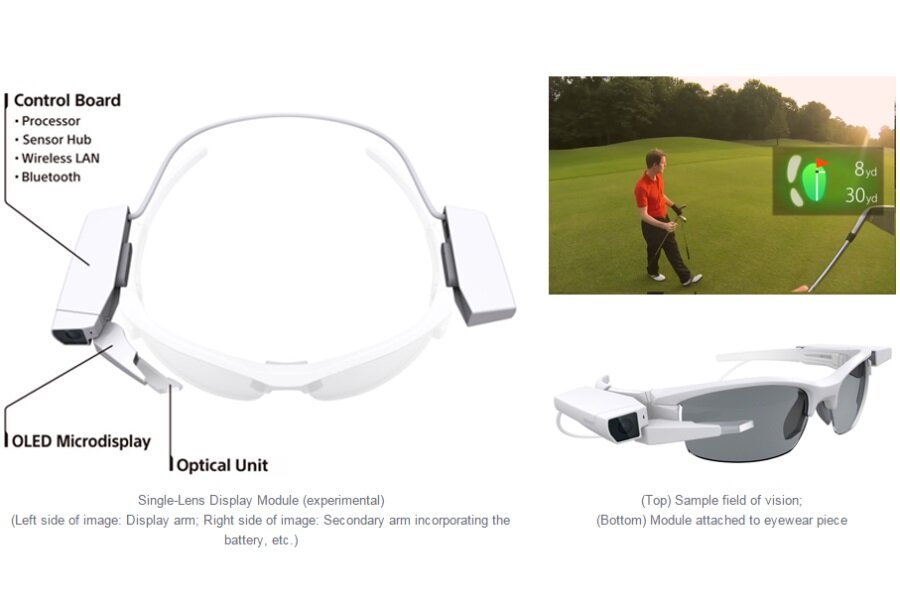Sony debuts Google Glass-like gadget that clips onto your favorite shades
Loading...
Early adopters may be predicting the end of Google Glass, but Sony isn’t giving up on the idea of high-tech shades.
On Wednesday, the company announced that it’s working on a similar device that will clip right onto your favorite pair of glasses, transforming them into wearable technology.
Sony’s device, which doesn’t have an official name yet, has a camera and a small 640x400 OLED screen that the company says will allow it to show images in bright outdoor light or in dark rooms.
The company's press release says users will be able to see “visual information that adds a level of convenience to [their] everyday lives,” which presumably means incoming texts and e-mails, photos, videos, and context-sensitive information such as nearby shops and restaurants. The module can connect with other devices and the cloud through Wi-Fi or Bluetooth. The small battery that powers the device will clip on the other arm of the user’s glasses.
The biggest advantage of Sony’s clip-on offering is the fact that it can be detached from a pair of glasses and stowed away when it’s not being used. One of the major drawbacks of Google Glass (besides its $1,500 price) is that some people find it off-putting. You never know when a wearer might be taking a video, or whether they’re zoning out to on-screen information. Sony’s device is pretty light at 0.08 pounds, so you could easily keep it in a pocket or bag until it’s needed.
Sony is encouraging developers to write software that can be used with the module. The press release, for example, shows a golfer using the device to display information about the distance of a drive in the corner of his field of vision. Sony also speculates that its device could be linked to companies’ internal networks to give employees easy access to information and instruction. Applications can run independently on the glasses module itself, or synced over Wi-Fi with smart phone apps. Sony says it’s planning to release software development kits to partner companies so they can dive into the device.
Sony will show off its module at the upcoming Consumer Electronics Show (CES), to be held in Las Vegas from January 6 to 9. The public will be able to see the concept model, known as “SmartEyeglass Attach,” though Sony hasn’t said whether anyone outside of the company will be allowed to actually try one on.






